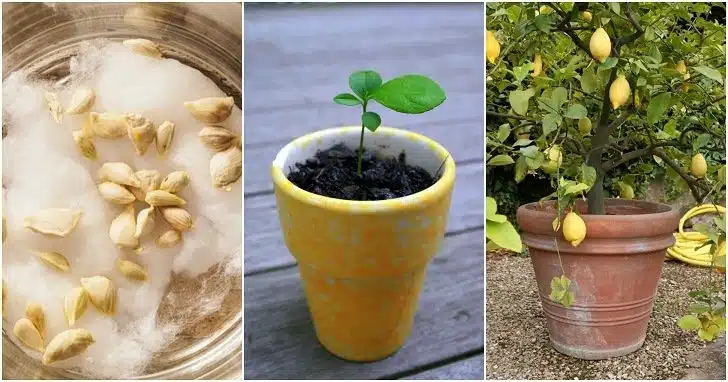There’s nothing quite like the fresh, tangy scent of lemons – especially when they come from your own tree.
While lemon trees (Citrus limon) are typically grown in warm, sunny climates, you don’t need to live in California or the Mediterranean to enjoy a giant, fruit-bearing lemon tree.
With the right techniques, you can grow a thriving, oversized lemon tree almost anywhere, whether indoors in a container or outdoors in cooler regions.
Why Grow a Lemon Tree?
- Fresh, homegrown lemons year-round
- Attractive foliage and fragrant blooms
- Air-purifying and ornamental indoors
- Long-living and self-pollinating (most varieties)
- Therapeutic gardening experience with edible rewards
Can You Really Grow a Giant Lemon Tree Anywhere?
Yes – but your approach will vary depending on your climate:
- Warm zones (9–11): Grow directly in the ground for maximum size.
- Cool or cold zones (4–8): Use containers and bring indoors for winter.
- Apartments/urban settings: Grow dwarf varieties indoors with supplemental lighting and proper pruning.
With proper care, even potted lemon trees can grow 5–8 feet tall and produce full-size fruit.
Step 1: Choose the Right Lemon Variety
Some lemon trees grow better indoors, while others are ideal for outdoors or large containers.
Best Varieties for Indoor or Container Growth:
- Improved Meyer Lemon: Compact, prolific, and sweet-tasting. Great for pots and colder zones.
- Ponderosa Lemon: Produces massive, grapefruit-sized lemons. Best for warm climates or heated greenhouses.
- Eureka Lemon: Classic tart flavor, good for in-ground or large containers.
- Lisbon Lemon: Vigorous and cold-tolerant, perfect for outdoor giant trees in zones 9–11.
Tip: For container growing, choose a dwarf or semi-dwarf rootstock to manage height while maximizing fruiting potential.
Step 2: Pick the Perfect Location
Outdoor Location:
- Full sun: 6–8 hours minimum
- Sheltered from strong wind
- Well-draining soil with slight acidity (pH 5.5–6.5)
Indoor Location:
- Brightest south-facing window
- Avoid cold drafts or dry air near vents
- Supplemental grow lights if light is limited
Step 3: Prepare the Right Soil
Lemon trees require well-draining, loose, and slightly acidic soil.
For ground planting:
- Mix compost, sand, and perlite into native soil.
- Amend with peat moss or sulfur if your soil is alkaline.
For containers:
Use a citrus-specific potting mix or make your own:
- 2 parts peat moss
- 1 part perlite
- 1 part coarse sand
- Optional: add compost or worm castings
Step 4: Choose a Large Pot (For Container Growing)
A lemon tree needs space for roots to expand.
Best Pot Size:
- Start with a 5-gallon container for young trees
- Graduate to a 15- to 25-gallon pot for full-sized growth
Features:
- Drainage holes are a must
- Terracotta, ceramic, or heavy plastic pots are ideal
Step 5: Water Properly
Lemon trees hate soggy soil but need consistent moisture, especially when growing.
Watering Tips:
- Allow top 1–2 inches of soil to dry before watering
- Deep water the soil until it drains
- Never let the tree sit in water
- Reduce watering in winter
Signs of Overwatering:
- Yellowing leaves
- Leaf drop
- Root rot
Signs of Underwatering:
- Wilted, curled leaves
- Dry soil pulling away from the pot edges
Step 6: Feed Your Lemon Tree
TO CONTUNUE READING THE ARTICL PLEASE SEE PAGE 2 .




